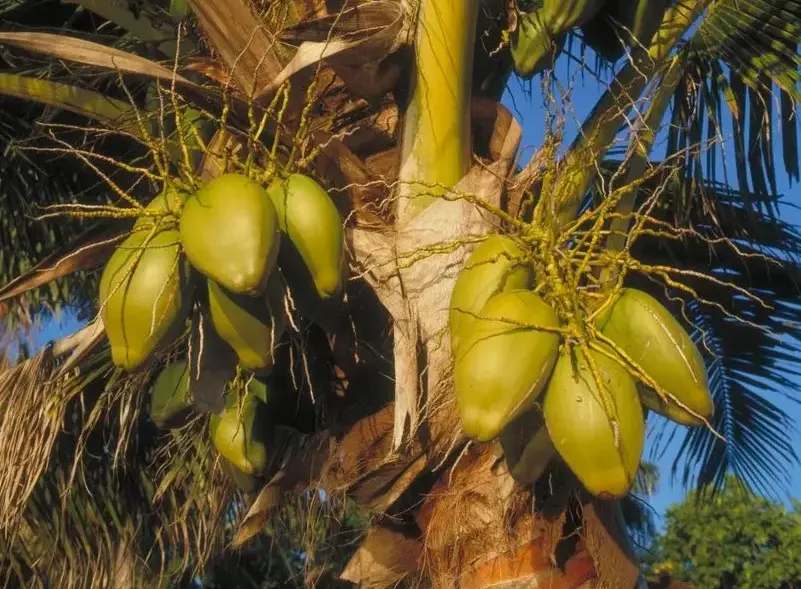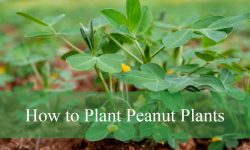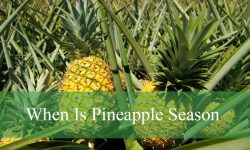If you’re looking to cultivate a coconut tree, you’re in for a rewarding experience. This coconut growing guide will walk you through everything you need to know about caring for a coconut palm tree. From choosing the right location to understanding essential maintenance practices, this comprehensive guide will give you all the tips for successful coconut cultivation.
Understanding the Coconut Tree

The coconut tree (Cocos nucifera) is part of the palm family and grows well in tropical and subtropical climates. Known for its towering height and iconic long fronds, the coconut palm can reach heights of up to 80-100 feet under optimal conditions. Not only do they add beauty to the landscape, but they also produce coconuts, which are versatile and valuable for culinary and non-culinary purposes.
Choosing the Right Coconut Variety
There are several varieties of coconut palms, and selecting the right one for your climate and goals is essential. Here are the two main types:
- Tall Varieties: These can grow up to 100 feet and are typically more resilient, producing coconuts for up to 80 years. However, they may take 6-10 years to begin fruiting.
- Dwarf Varieties: As the name suggests, dwarf varieties are smaller and can start producing fruit as early as three years. They typically reach about 20-60 feet and are easier to maintain and harvest.
Choosing between these two largely depends on your space and patience for growth.
Ideal Climate and Location for Coconut Trees
Coconut trees thrive in warm, humid climates, ideally in USDA hardiness zones 10-12. Here’s what they need to flourish:
- Sunlight: Coconut trees need full sunlight for at least 6-8 hours a day. A sunny, unshaded spot is ideal.
- Soil: Coconut palms grow best in sandy, well-draining soils with a slightly acidic pH of 5.5 to 7.5. Good drainage is essential to prevent root rot.
- Humidity: They thrive in high humidity environments, preferably above 70%. If growing in a dry climate, regular misting can help maintain adequate humidity.
- Temperature: They grow best in temperatures between 70°F and 85°F. Prolonged exposure to temperatures below 50°F can harm the tree.
Planting Coconut Trees
Planting a Coconut Seedling
Once you have a healthy coconut seedling, here’s how to plant it:
- Dig a Hole: Dig a hole twice as wide as the root ball and about 1-2 feet deep.
- Position the Seedling: Place the seedling in the hole and fill it halfway with soil.
- Water Thoroughly: After filling, water the plant thoroughly to help settle the soil.
- Mulch: Add a layer of mulch around the base to help retain moisture and regulate soil temperature.
Watering Needs for Coconut Trees
Watering is a crucial aspect of coconut tree care. Coconut palms require a consistent watering schedule, especially during dry periods.
- Frequency: Water young plants once a week. Once established, they can tolerate some drought but will thrive with regular watering.
- Volume: Aim for deep watering, about 1-2 inches of water each session. This encourages the roots to grow deeper, making the tree more resilient.
- Drip Irrigation: If possible, consider using a drip irrigation system to provide consistent moisture without waterlogging the soil.
Fertilizing Coconut Trees
Regular fertilization can significantly boost growth and productivity in coconut trees. Here’s what you need to know:
- NPK Ratio: Coconut trees benefit from a balanced N-P-K (Nitrogen-Phosphorus-Potassium) fertilizer. A ratio of 2-1-1 (such as 8-4-4) is often recommended.
- Frequency: Fertilize the tree every 3-4 months.
- Micronutrients: Coconut palms require micronutrients like magnesium, manganese, and boron. Use a palm-specific fertilizer with these trace elements to promote healthy growth.
Pruning Coconut Trees
Pruning is an essential part of coconut palm tree maintenance. While they don’t require frequent pruning, removing dead fronds and any fruit can help promote a healthy tree.
- Dead Fronds: Remove fronds that have turned brown and dry, as these can attract pests.
- Fruits and Flowers: If the tree is young, remove flowers and small coconuts to allow the tree to focus on root and leaf development.
- Frequency: Prune the tree once or twice a year, but avoid over-pruning, as coconut trees are naturally self-cleaning and can shed fronds.
Protecting Coconut Trees from Pests and Diseases
Several pests and diseases can affect coconut trees. Regular inspection and prompt action are crucial.
Common Pests:
- Rhinoceros Beetles: These beetles burrow into the crown, damaging young fronds and stems. Use insecticides and manually remove the beetles.
- Red Palm Mite: This pest causes yellow spots on the fronds. Use miticides and prune affected fronds.
- Coconut Moth: This moth’s larvae eat young fronds. Use biological control agents to manage infestations.
Common Diseases:
- Lethal Yellowing: This is a bacterial disease that causes yellowing and death of leaves. It’s spread by insects, so regular inspection and the removal of affected trees are essential.
- Bud Rot: Caused by fungi, this disease affects the bud of the tree, leading to crown decay. Applying fungicides can help, especially during the rainy season.
Harvesting Coconuts
Knowing when and how to harvest coconuts can maximize their quality and yield.
- When to Harvest: Coconuts are usually ready for harvest after 12-14 months. For drinking purposes, young green coconuts are harvested at around 6-8 months.
- How to Harvest: Use a long pole or ladder to reach the coconuts. Be cautious as coconuts are heavy and can cause injury if they fall.
- Frequency: Coconut trees typically produce a crop every 2-3 months, so a single tree can yield around 50-100 coconuts per year.
Growing Coconut Trees Indoors
If you live in a colder climate, you can still try growing a coconut tree indoors. While it won’t reach the same height or yield as an outdoor palm, it can be a beautiful addition to your indoor plant collection.
Steps for Indoor Coconut Cultivation:
- Container: Use a large container with proper drainage holes.
- Soil: Choose a lightweight, sandy potting mix to provide adequate drainage.
- Lighting: Place the pot in a sunny location, preferably near a window with 6-8 hours of direct sunlight.
- Watering: Water when the top inch of soil is dry but avoid overwatering.
Seasonal Coconut Tree Care Tips
To ensure a healthy and productive coconut tree, adjust care based on the season:
- Spring: Fertilize and prune dead fronds as new growth begins.
- Summer: Increase watering frequency during dry spells and watch for pests.
- Fall: Reduce watering slightly and apply a final fertilizer application.
- Winter: Move potted coconut trees indoors if temperatures drop and reduce watering.
Benefits of Growing Coconut Trees
Aside from their visual appeal, coconut trees provide numerous benefits:
- Environmental Impact: Coconut trees help prevent soil erosion and improve air quality.
- Culinary Uses: From coconut water to coconut oil, every part of the fruit can be used in cooking and health products.
- Health Benefits: Coconut products offer antioxidants, healthy fats, and are used in natural remedies.
- Economic Value: Selling coconuts and coconut-based products can offer a steady income.
Common Challenges and Troubleshooting Tips
- Yellowing Leaves: Often a sign of nutrient deficiency. Check for signs of nitrogen, potassium, or magnesium deficiency.
- Slow Growth: Ensure the tree receives adequate sunlight, water, and nutrients.
- Root Rot: Avoid waterlogging by ensuring well-draining soil.
Conclusion
Growing and caring for a coconut tree is a fulfilling endeavor that rewards you with tropical beauty and nutritious coconuts. By following these ultimate tips, from selecting the right variety to mastering seasonal care, you can ensure your coconut tree thrives. Regular attention to watering, fertilizing, pruning, and pest management will result in a healthy, productive coconut tree for years to come. Whether grown in your backyard or indoors, a well-cared-for coconut tree can be a tropical treasure that adds value and beauty to your space.
Embrace these coconut tree care tips and enjoy the journey of cultivating this iconic tropical tree!






